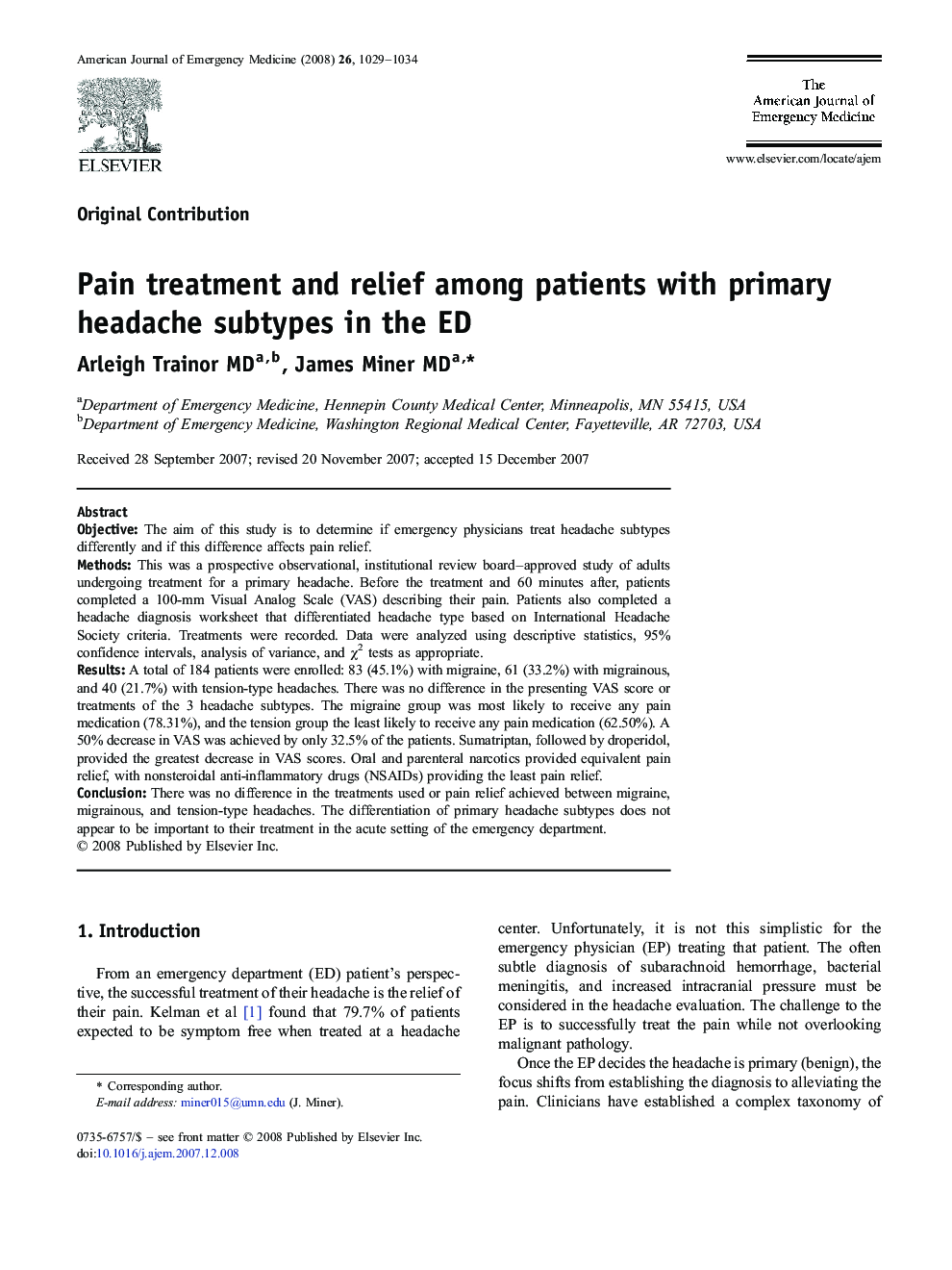| Article ID | Journal | Published Year | Pages | File Type |
|---|---|---|---|---|
| 3226540 | The American Journal of Emergency Medicine | 2008 | 6 Pages |
ObjectiveThe aim of this study is to determine if emergency physicians treat headache subtypes differently and if this difference affects pain relief.MethodsThis was a prospective observational, institutional review board–approved study of adults undergoing treatment for a primary headache. Before the treatment and 60 minutes after, patients completed a 100-mm Visual Analog Scale (VAS) describing their pain. Patients also completed a headache diagnosis worksheet that differentiated headache type based on International Headache Society criteria. Treatments were recorded. Data were analyzed using descriptive statistics, 95% confidence intervals, analysis of variance, and χ2 tests as appropriate.ResultsA total of 184 patients were enrolled: 83 (45.1%) with migraine, 61 (33.2%) with migrainous, and 40 (21.7%) with tension-type headaches. There was no difference in the presenting VAS score or treatments of the 3 headache subtypes. The migraine group was most likely to receive any pain medication (78.31%), and the tension group the least likely to receive any pain medication (62.50%). A 50% decrease in VAS was achieved by only 32.5% of the patients. Sumatriptan, followed by droperidol, provided the greatest decrease in VAS scores. Oral and parenteral narcotics provided equivalent pain relief, with nonsteroidal anti-inflammatory drugs (NSAIDs) providing the least pain relief.ConclusionThere was no difference in the treatments used or pain relief achieved between migraine, migrainous, and tension-type headaches. The differentiation of primary headache subtypes does not appear to be important to their treatment in the acute setting of the emergency department.
